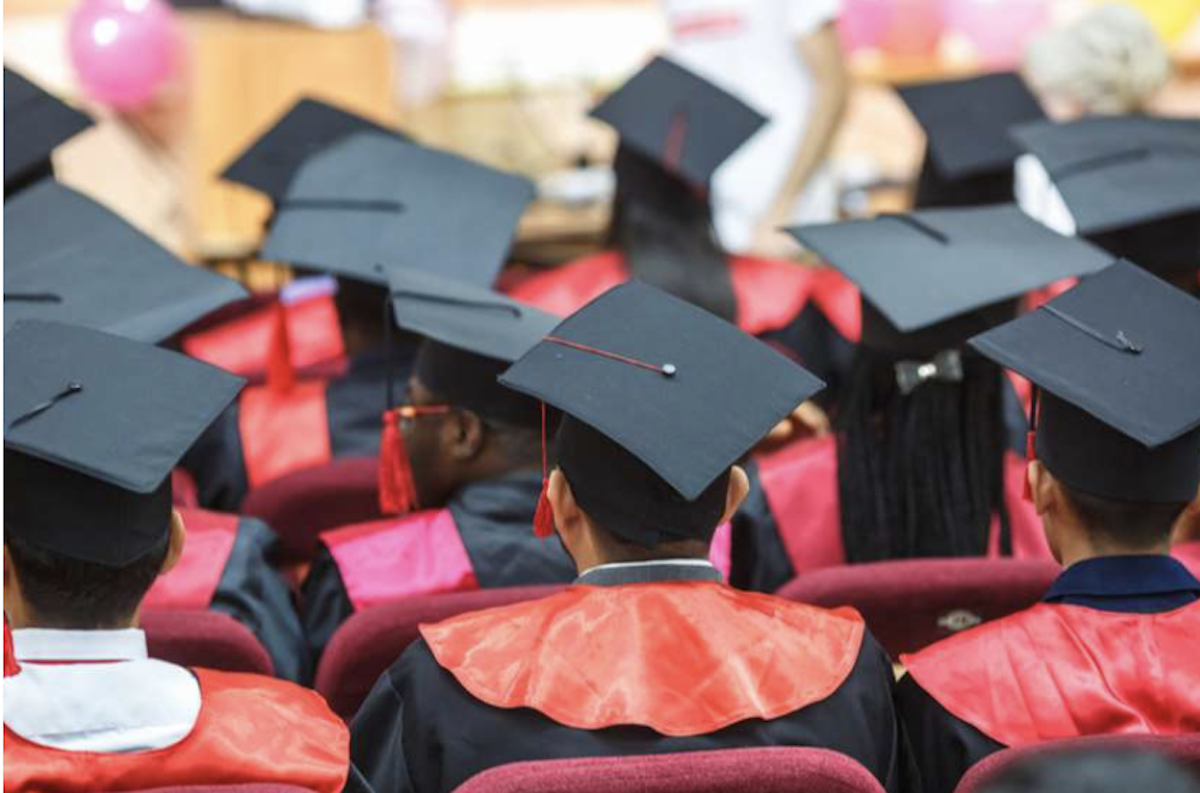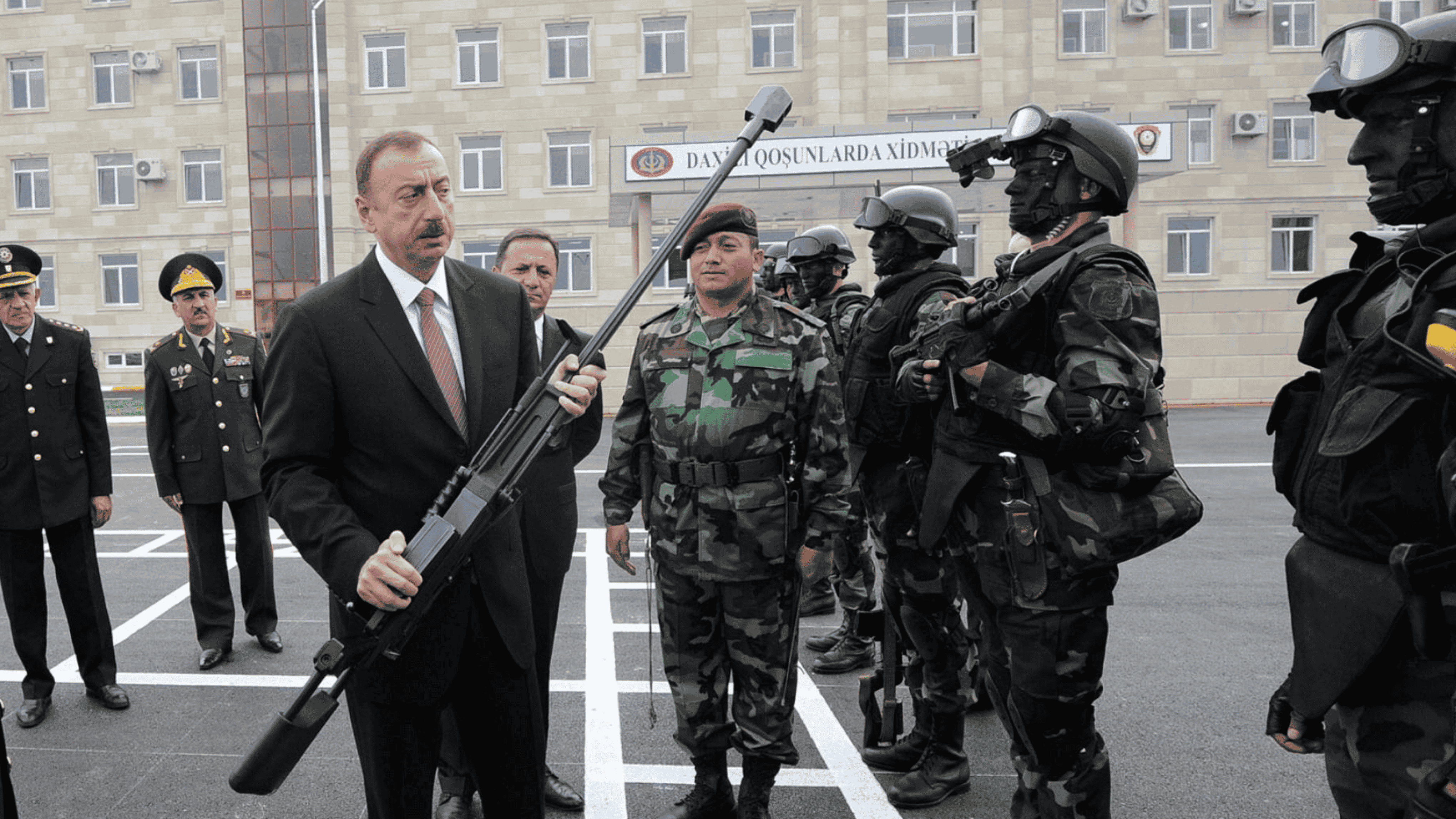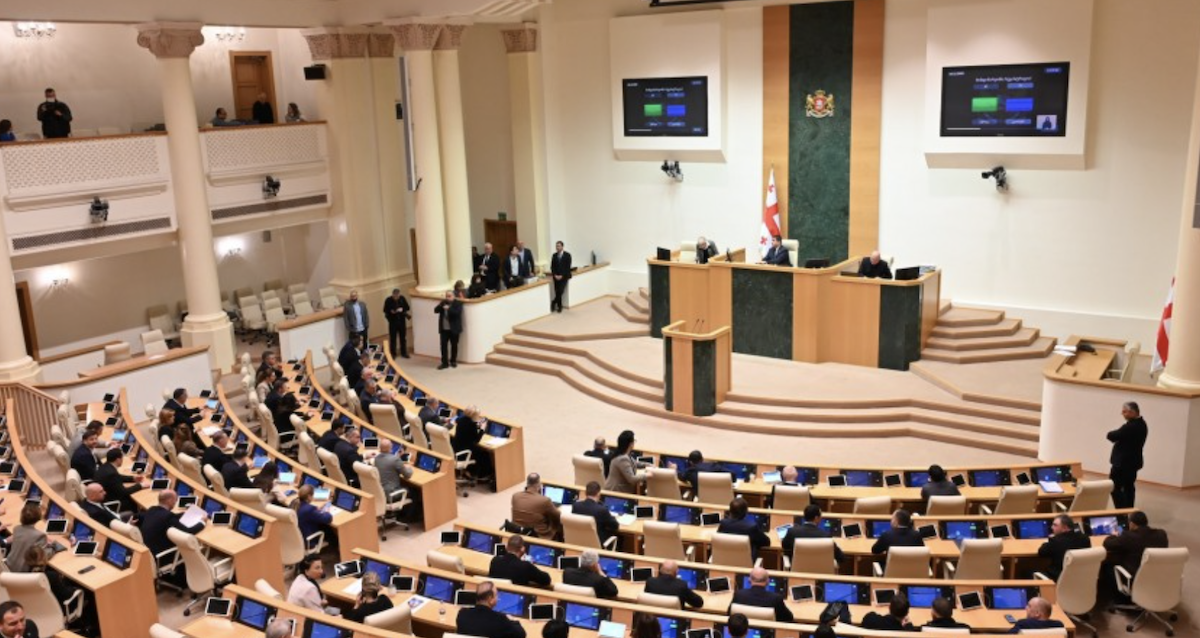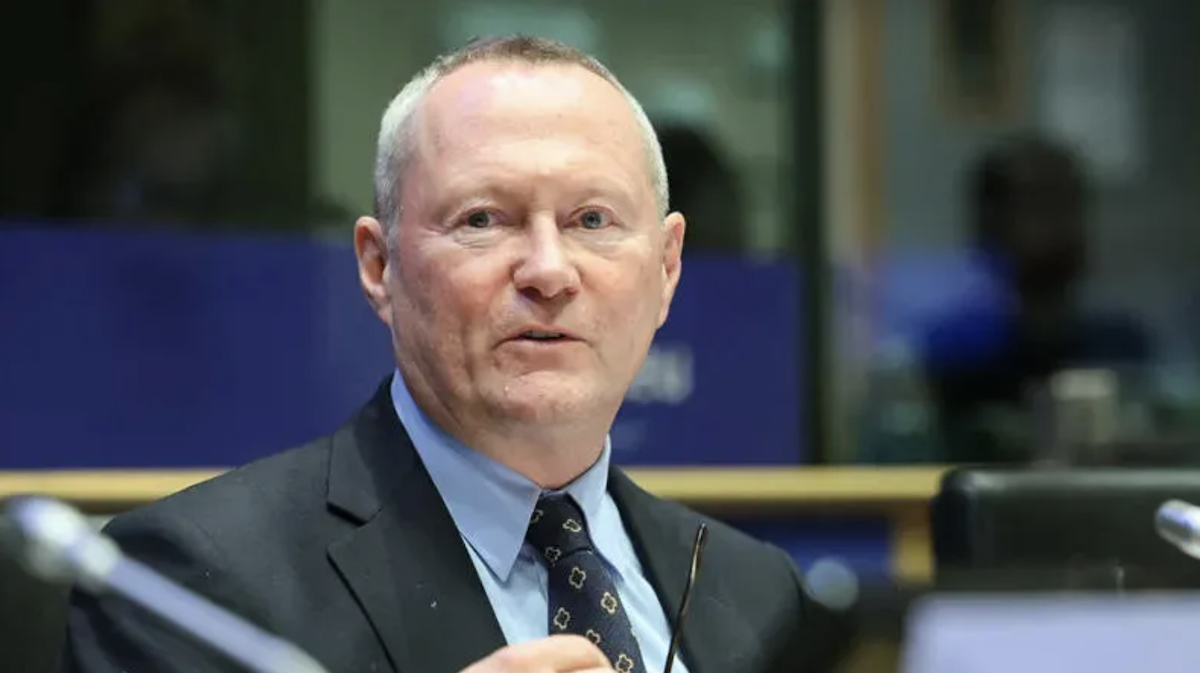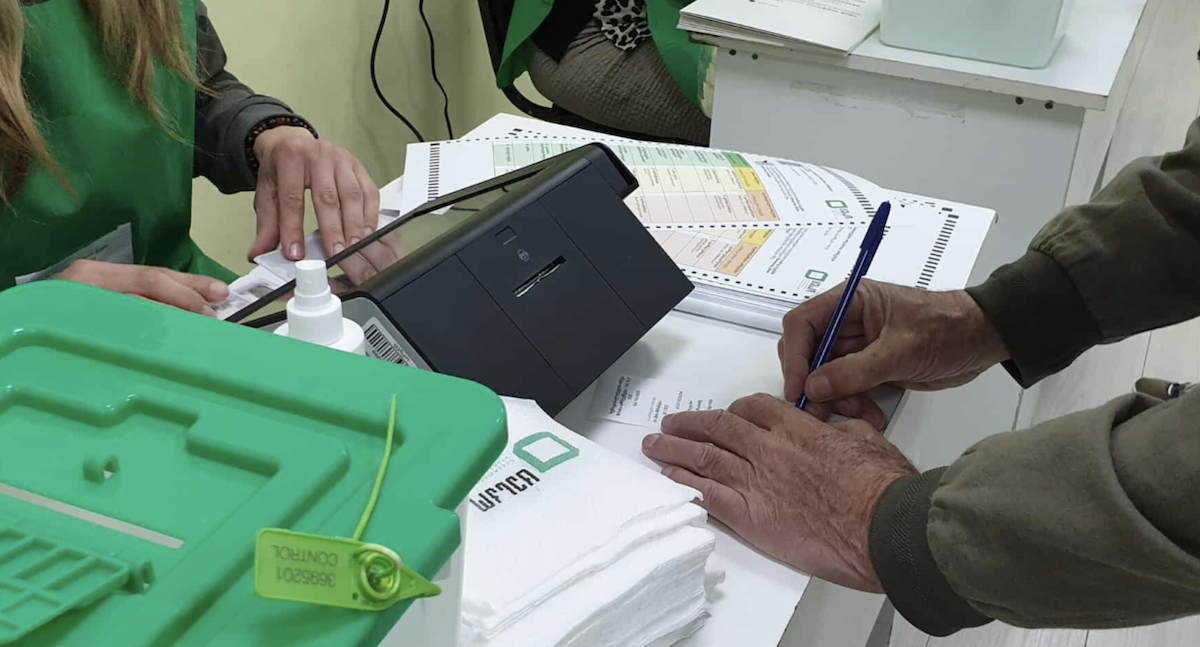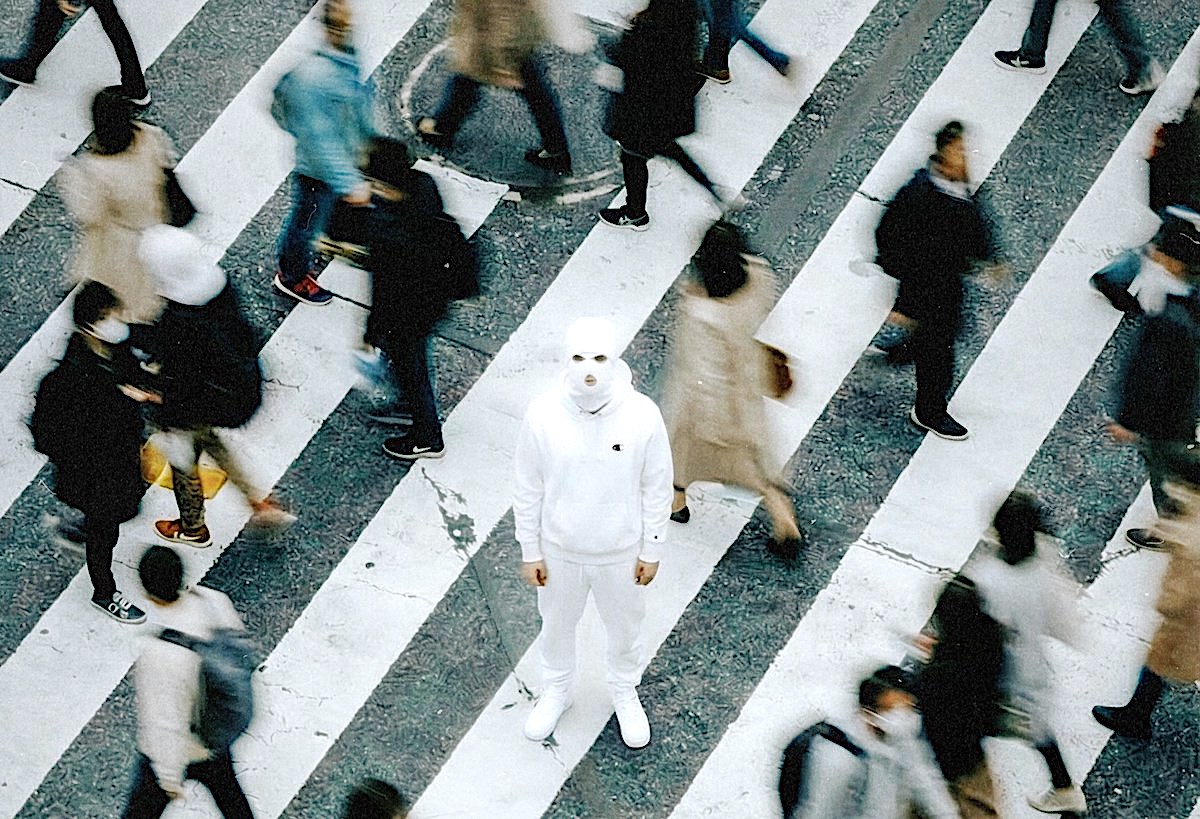What do animals need for happiness in the Yerevan Zoo?
At 09.00 a.m. we entered the Yerevan Zoo, along with its 86 employees. We have not come to help them take care of the animals or to monitor the animals’ health conditions. Rather, to learn how a day passes in the renovated and reconstructed zoo.
The zoo – past and present
The zoo in Yerevan was opened in 1940, with only twenty animals and birds inhabiting the zoo which spanned a 3ha. area.


Today, the zoo is still not regarded as a large park, though its territory has grown – 34 ha. More than half of this area has not been occupied yet, though there are plans to build new aviaries there.
At present, 133 specimens of animals inhabit the zoo – in total 930 species. There are 18 specimens of predators, over 40 specimens of birds, approximately 30 specimens of fish, approximately 200 specimens of reptiles and approximately the same number of hoofed mammals in the zoo. Loved by all, primates, different rodents, three specimens of chiropterans and only proboscidea – elephant Grand inhabit the zoo.


Two doors are open to visitors at the entrance of the zoo: one leads to the current zoo, another to its past.

If you go to the right
When you go to the right you will see squirrel monkeys, who are considered to be the most quick-witted representatives of primates. The specific weight of these animals’ brains exceeds the mass of their bodies. They are naughty and very communicative. Judging from the conditions they are kept in, one can imagine the zoo’s evolution over the last few years.

The territory of the squirrel monkeys’ residence is a vivid example of the zoo’s aspiration, as it is considered here that the animals must live in conditions as close to their natural habitat as possible – in aviaries. In fact, the animals live simultaneously in freedom and in captivity. There are no cages, but the animals live on the island, surrounded by water, which does not give them the opportunity to escape as they are afraid of water.


If you go to the left
On the opposite side an eagle vulture lives in a cage, which has been here since the 1940s. By the way, prisoners of World War II participated in the construction of some buildings at the zoo.
Though the eagle vulture lives in the cage, the zoo employees managed to create comfortable conditions for it, which resulted in a miracle: two baby-birds were born. It is noteworthy that the bird had not laid the eggs since the year 2000.

Repair works
Renovations have been underway in the zoo since 2011. Funds are allocated from different sources in the framework of various ecological programs, including from the Fund for Protection of Nature and Cultural Values – the zoo’s main partner.
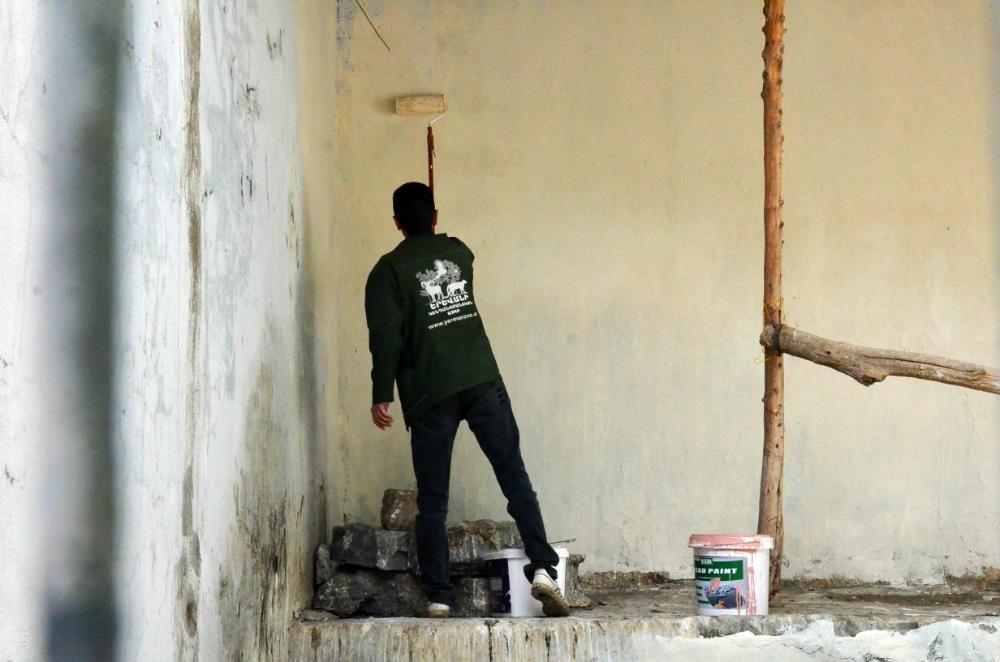
A new multi-stage renovation program, funded by City Hall, has been in progress since 2013. Only 7 ha of the zoo’s territory had been used for the intended purpose before the renovations.
“The zoo is under City Hall’s control. It is important that Yerevan’s City Hall is the main partner of all transformations. Together with foreign partners, City Hall elaborates and implements long-term programs of the zoo’s renovations,” says Ruben Khachatryan, the zoo’s director.
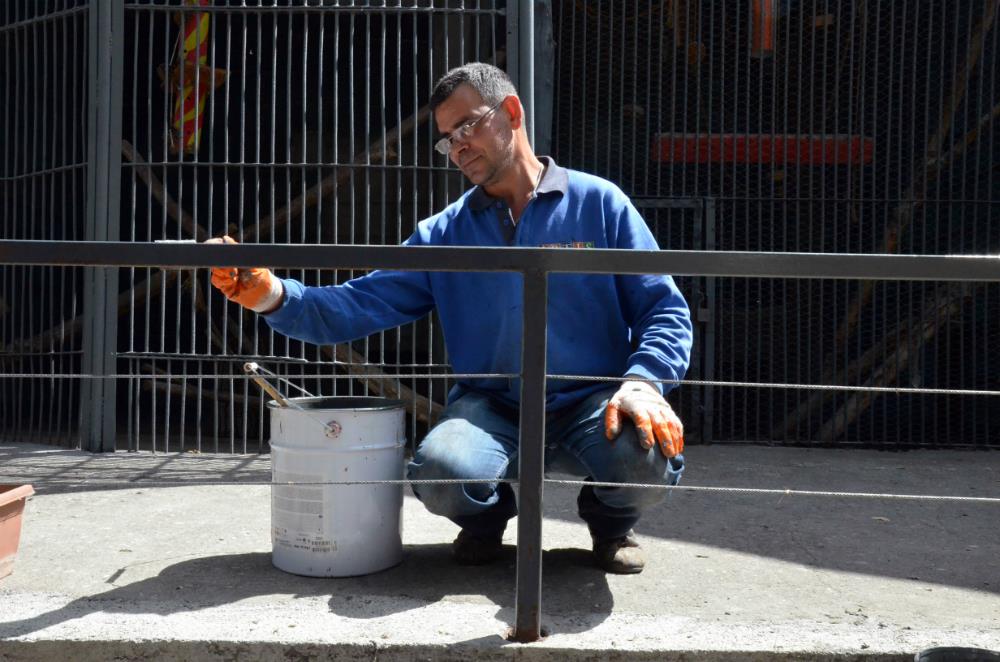
Visitors won’t notice some of the renovations, as first of all a thorough overhaul of internal communications, namely, renovation of the sewerage system, is carried out in the zoo. “We are to perform serious work to become a full-fledged member of the European Association of Zoos and Aquaria,” notes Ruben Khachatryan.
Reforms and new standards
The construction of aviaries is currently the main focus. Where water plays the role of a cage in the case of the squirrel monkeys, electricity is used in others. Some hoofed animals live behind a wooden fence. Here a question arises – why don’t they run away? The answer is in the photo.
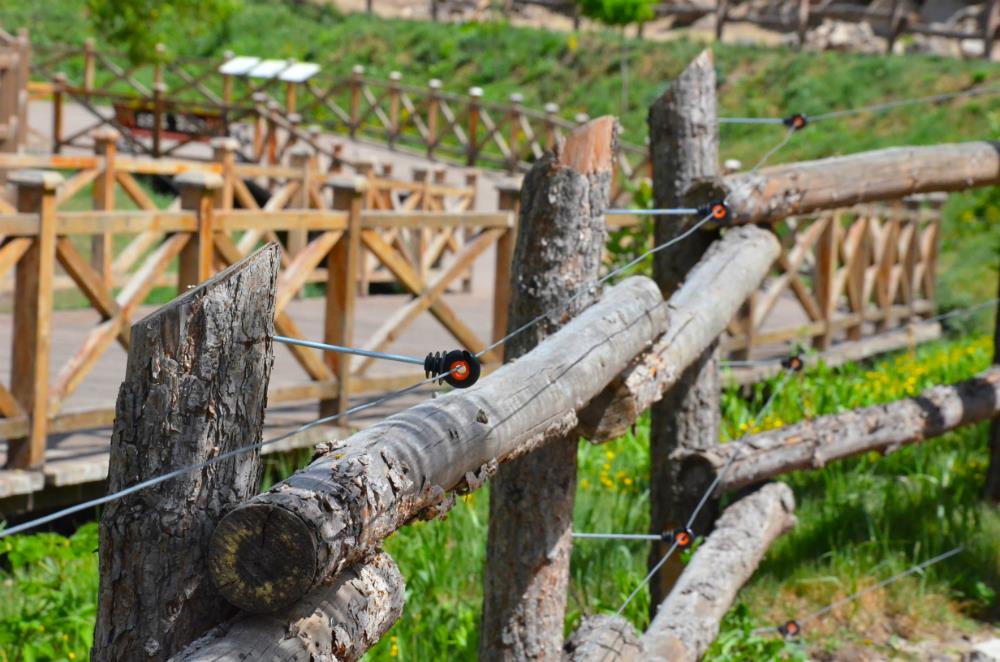
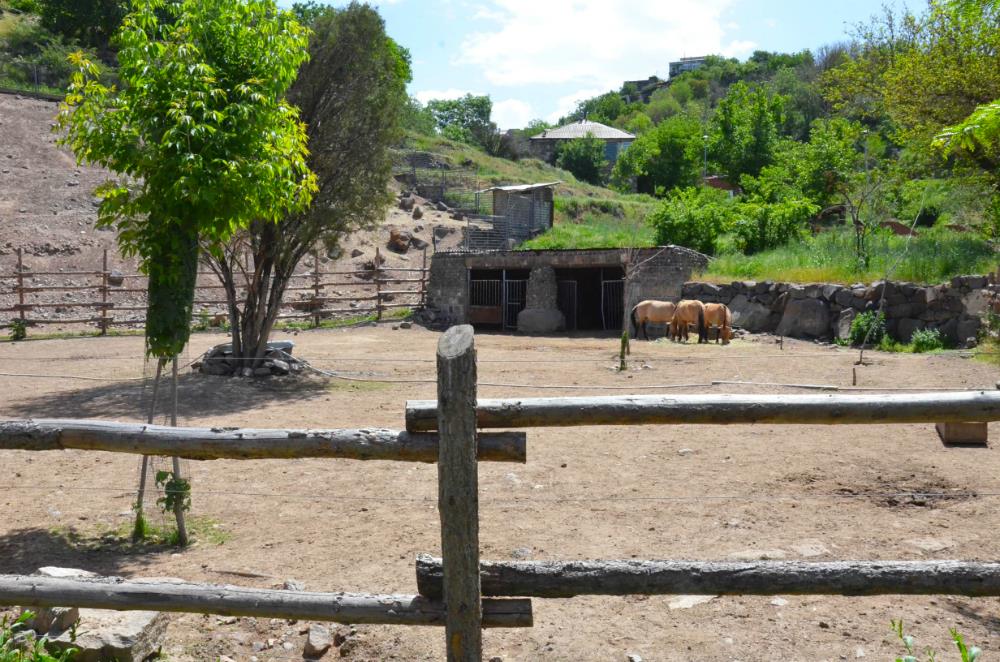
Some animals live behind glass screens that are beyond the visitors’ notion about ordinary cages.
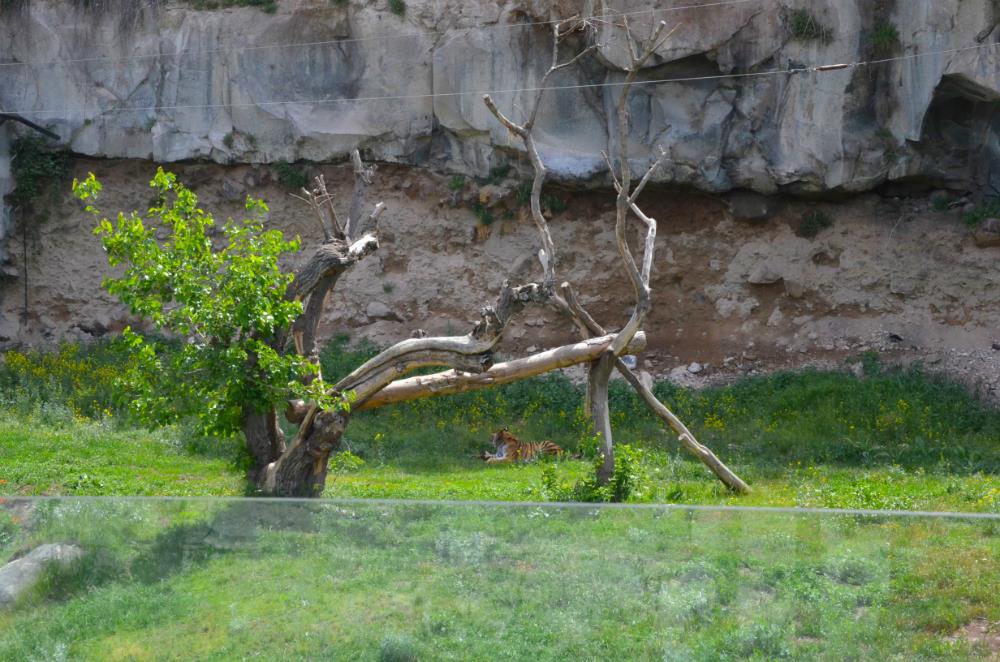
Implanting chips in animals are among the innovations. This will provide with information on the animal’s sex, age, medical history and other details that may be necessary if the animal is taken to a new place of residence. Factually, the animal carries around its ‘biography’.


After renovations, the zoo became one of the few public structures in Yerevan where an inclusive playground exists. In fact, the whole park may be considered inclusive as everybody can visit and see it without any problems. It is noteworthy that there is a hippodrome in the park where therapeutic horse riding courses for disabled people are held several days a week.



The zoo’s veterinary clinic is another important achievement. The clinic serves all animals, requiring medical aid, beyond the zoo alongside with its inhabitants, free of charge.

The veterinary clinic

Harutyun Hovhannesyan, the zoo’s senior veterinarian, examines the animals under his care every morning. He has been working here for approximately five years and has performed many operations during this time.

He remembers, most of all, an operation he performed on a deer: the pregnant doe had a hernia and her life was on the brink of death. The veterinarian had to operate her in the aviary. As a result, the animal survived though a fetus was removed.
“An animal’s behavior clearly reflects its health conditions. Here is a simple example: if the animal separates from the group it may mean that something is wrong with it,” says the veterinarian.
It is easier for veterinarians to work now as all conditions for taking care of animals have been provided: there are operating rooms, syringes for sedative shot injections, anesthesia apparatus’ and many other instruments that were only to be dreamed about in the past.
We were allowed to see how the veterinarian took care of a jungle-cat.


Bunka elephant and his friend Gevorg

Gevorg Grigoryan is a head of the hoofed animals department. He is also responsible for taking care of elephant Grand-the-Junior. Gevorg takes care of his skin, legs, tames him and teaches him how to play the accordion. He has been working in the zoo for 22 years, and for the last 8 years he has taken care of three elephants.

“The elephant is very clever. He is our sonny, he loves and respects us and we love him,” says Gevorg.
Bunka – not Grand – that’s how he calls the elephant. The elephant was transported there from Georgia where they used to call him Bunka. The animal got accustomed to that name.
Gevorg joyfully tells us how he marks his favorite’s birthday on the last day of the year – December 30. To make his friend happy he brings him winter branches and fruits, and recreates the atmosphere of wild nature.
“Our boy needs a mate, he feels a bit lonely. At present he feels uneasy,” Gevorg says anxiously.
Professional cooperation
The Yerevan Zoo employees exchange their experience with professionals of partner organizations, namely, with their counterparts from the Amsterdam Royal Artis Zoo. They exchange experience in the form of joint daily work – the colleagues visit one another periodically.

They also permanently cooperate virtually. The local specialists consult experienced foreign colleagues in case of any problem with the animals.
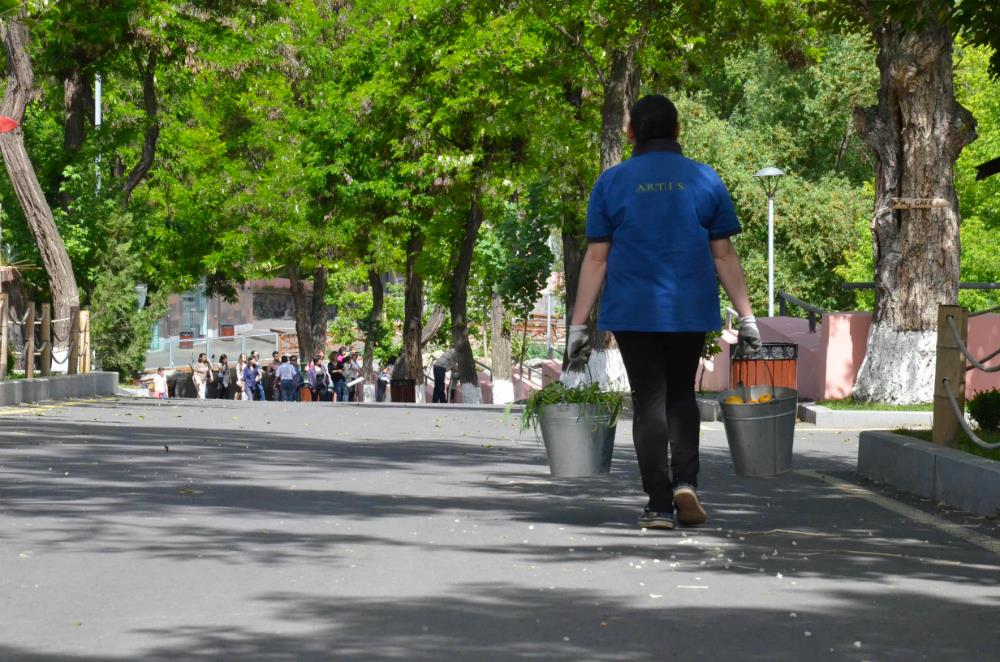
Peaceful coexistence
There are sections where several specimens of animals live together. They say sometimes quarrels occur in small families. For example, the naughty squirrel monkeys share their aviary with swans and try from time to time to steal the birds’ eggs.

A white-headed vulture lives with rabbits. Surprisingly, he does not endanger them. The point is that vultures eat only carrion.

A list of expectations
There are still cages in a certain part of the zoo and some animals have to live in some uncomfortable conditions. An African lion has a very small cage. The monkeys are among the animals whose living conditions do not change either in winter or summer, while ring-tailed lemurs have comfortable summer and winter aviaries.
At the same time none of the visitors to the zoo leave it having not seen a lion and a tiger, living in limited-space.


The main thing is that the zoo’s reconstruction has already started and is progressing steadily.
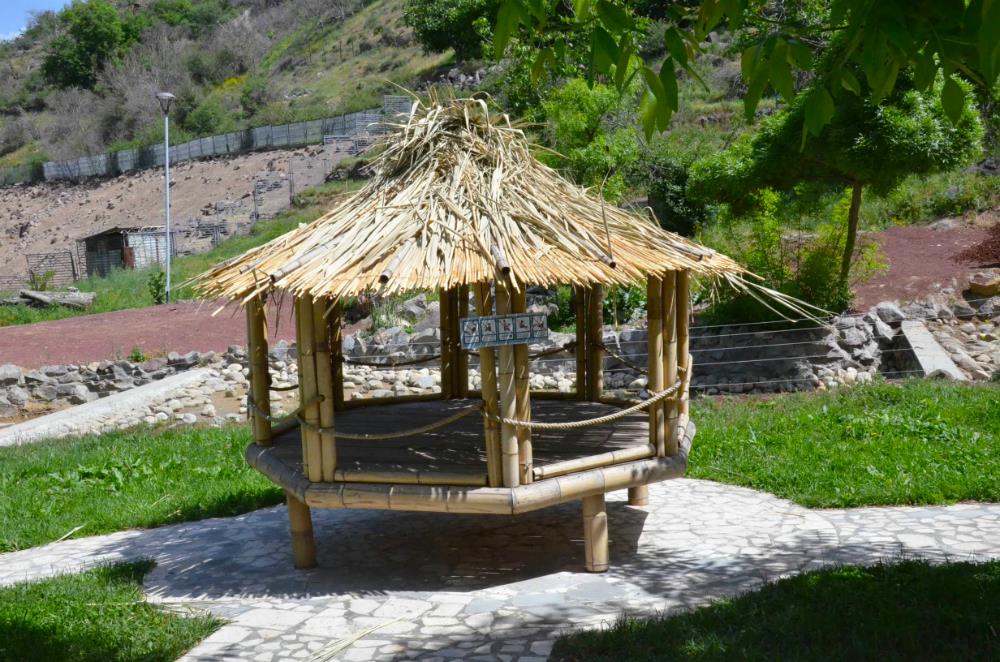

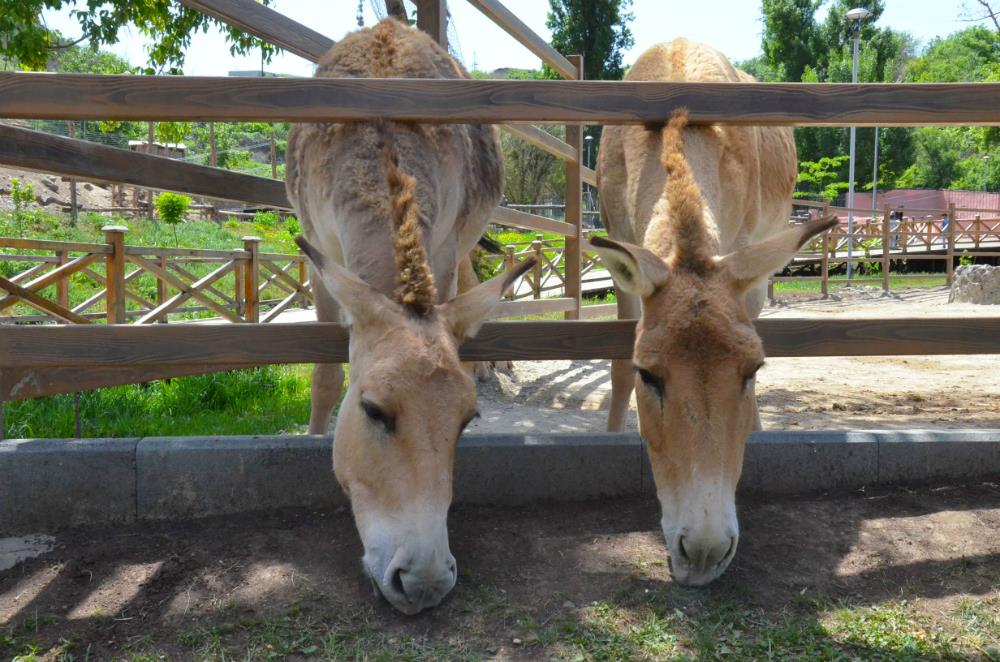

Published: 11.06.2016











